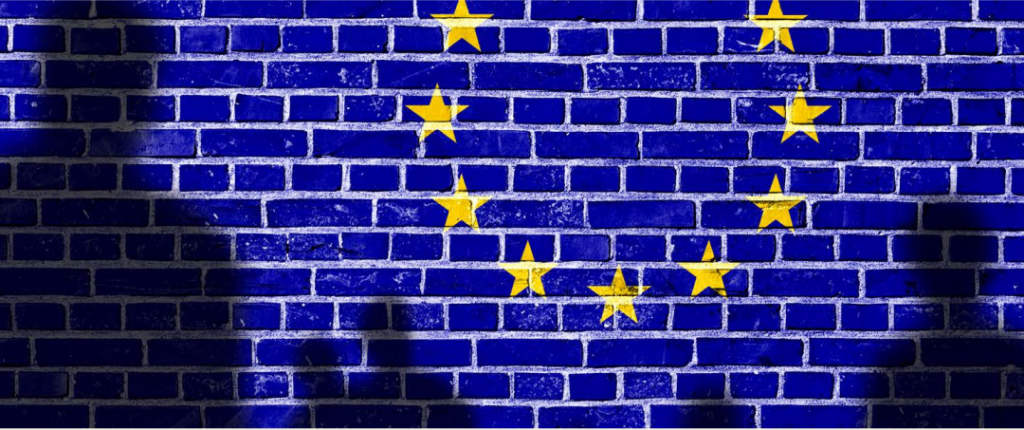L’Europe et l’asile: d’un espace de protection à un espace protégé

En octobre 1999, à Tampere en Finlande, les chefs d’État ou de gouvernement européens posaient les jalons de la politique européenne de l’asile. Ils y affirmaient les principes structurant de cette politique à savoir « le droit absolu de demander l’asile », « l’application intégrale et globale de la Convention de Genève » et le respect du « principe de non-refoulement ». Presque 22 ans après, les espoirs forgés en Finlande ont disparu.
Lorsque le président de la République française a annoncé le 16 août 2021 « la déstabilisation de l’Afghanistan risque également d’entraîner des flux migratoires irréguliers vers l’Europe (…) Nous devons anticiper et nous protéger contre des flux migratoires irréguliers importants qui mettraient en danger ceux qui les empruntent, et nourriraient les trafics de toute nature », il n’a pas seulement, tout comme ses prédécesseurs, renié les engagements de Tampere au regard du droit d’asile, il a aussi validé un glissement à l’œuvre depuis des années faisant du contrôle des flux migratoires l’axe central des politiques nationales et, par conséquent, de la politique européenne.
Pour le dire simplement, les dirigeants européens sont passés en moins de 20 ans de l’objectif de construire un espace européen de protection, pour les personnes fuyant les guerres et les persécutions, à la construction d’un espace protégé, basé sur le renforcement toujours plus important de la frontière extérieure et la tentation de transférer aux pays tiers la gestion des migrations sans toujours considérer la part déjà prise par ces pays dans l’accueil des populations déplacées.
Comment en sommes-nous – collectivement – arrivés là ? Plusieurs éléments peuvent, sans prétendre à l’exhaustivité, l’expliquer. Tout d’abord, le développement en parallèle des politiques d’asile et de gestion des frontières a abouti à un paradoxe qui perdure. Les États européens ont élaboré un droit d’asile très protecteur mais qui ne produit ses effets qu’à la condition d’être entré sur le territoire européen. Or, ils ont renforcé dans le même temps le contrôle des frontières extérieures de l’espace européen. Si bien qu’à mesure que les États européens établissaient des règles de protection toujours plus sophistiquées, ils rendaient l’accès au territoire toujours plus compliqué.
Ensuite, le contexte géopolitique a évolué. Les attentats terroristes de 2001, 2004 et 2005, ainsi que les transformations politiques au voisinage immédiat de l’Union européenne – printemps arabes, Syrie, Crimée – ont contribué à hisser le thème de la sécurisation de l’espace européen, et notamment de ses frontières, aux avant-postes des discussions et programmes politiques.
Enfin, la montée en puissance des « populismes » et partis d’extrême-droite a contribué à placer les questions de migration et de sécurité en haut de l’agenda politique européen. Entre amalgame et instrumentalisation, le curseur s’est déplacé en direction de politiques restrictives et de contrôle. Le programme stratégique 2019-2024 adopté par les dirigeants européens en juin 2019 ou encore le nouveau Pacte de la Commission européenne sur l’asile et l’immigration illustrent ce mouvement.
C’est donc dans ce contexte de glissement vers des solutions toujours plus sécuritaires, où la protection de l’espace l’emporte sur la protection des personnes, que s’inscrit l’allocution du président de la République. Cette situation invite à réfléchir aux solutions à adopter pour répondre au drame vécu par les afghans mais aussi aux orientations de la politique européenne d‘asile et d’immigration.
Dans l’immédiat, les États européens doivent établir des voies d’accès légales et rapide pour les personnes les plus exposées aux persécutions telles que les agents qui ont travaillé à leur service, les défenseurs des droits humains et les membres de famille des réfugiés afghans reconnus en Europe. Ils doivent par ailleurs cesser tout éloignement vers l’Afghanistan. Accueillir par pont aérien 2 000 personnes évacuées en France, à ce jour, sera cependant bien insuffisant au regard des dizaines de milliers d’Afghans menacés qu’il faudrait recevoir en Europe.
À moyen-terme, l’organisation de l’accueil et de la répartition des candidats réfugiés entre États européens est un enjeu de solidarité majeur. L’échec désastreux de la relocalisation des demandeurs d’asile syriens en 2015-2016 ne saurait se répéter. Les États européens doivent être à la hauteur de l’enjeu, en assumant d’accorder une protection temporaire à tous les Afghans, comme le permet une directive européenne, ou en créant un mécanisme de répartition solidaire et efficace sur la base de propositions existantes. A défaut de quoi, la solidarité restera une coquille vide.
La situation actuelle, tant dans l’émotion qu’elle suscite que dans l’impréparation qu’elle trahit, impose de s’interroger sur le fondement et les orientations d’une véritable politique d’asile et d’immigration. Tant dans les États qu’au niveau de la Commission européenne, un projet politique d’ensemble a cédé la place à un empilement de textes de circonstances. Renforcement des contrôles, multiplication de procédures spéciales et accélérées, réduction des droits ou encore limitation des mouvements secondaires, constituent la trame de fond des propositions récentes qui peinent à s’inscrire dans une politique de long-terme.
Les questions de l’asile et de l’immigration sont trop importantes pour être abandonnées à l’émotion et à l’opportunité. Elles convoquent, avant tout, une réflexion sur notre histoire commune et notre attachement aux textes fondamentaux qui la fonde. Elles invitent, ensuite, à ouvrir la focale et à considérer ce thème autrement que comme une simple question de sécurité intérieure. Les migrations relèvent tout autant de la politique étrangère, car elles commencent loin de nos territoires, de la sécurité intérieure, car les personnes franchissent des frontières, que des politiques d’accompagnement social, car les réfugiés s’installent durablement dans nos sociétés. Enfin, elles imposent une vision à long-terme qui s’appuie sur des projections géopolitiques, une meilleure compréhension des mobilités futures, une analyse articulée entre défis démographiques et besoins de main d’œuvre et une meilleure prise en considération de l’intégration.
Il n’est pas trop tard pour engager un grand travail de réflexion et d’échanges sur ces questions dans l’espace public tout autant que dans les institutions nationales et européennes. Souhaitons-nous poursuivre la construction d’un espace protégé du reste du monde, dans la logique identitaire qui réunit seulement ceux qui se ressemblent ? Ou bien, souhaitons-nous construire un espace de protection pour les européens et ceux qui sont éligibles à une protection par les européens, dans la tradition universaliste française et européenne qui promeut les politiques et actions qui rassemblent ?




